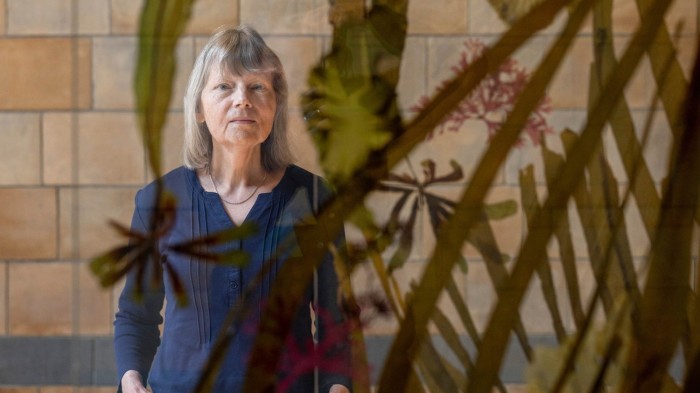Professor Juliet Brodie of London’s Natural History Museum has devoted her professional life to seaweeds. “When I started my research more than 40 years ago, there was very little interest in seaweeds, which were regarded as a minor part of marine environments,” she says.
Four decades later, ocean scientists are beginning to recognise the vital ecological role played by seaweeds in supporting aquatic ecosystems, Brodie says. Yet conservation measures are still “inadequate”, she adds, creating “a major gap, which urgently needs to be addressed”.
To provide an evidence base for global action, Brodie and colleagues at the Natural History Museum, Scottish Association for Marine Science and University of Malaysia have just published a report, The State of the World’s Seaweeds, which describes the growing threats from human activities and scope for seaweed protection and conservation.
Seaweeds provide food and shelter to marine life, capture carbon and produce oxygen, filter pollutants and improve water quality.
These macroscopic and multicellular algae grow in various shades of red, green and brown, and they make up an estimated 74 per cent of global vegetated marine ecosystems, the report estimates — far more than seagrasses (20 per cent), coral reefs (3.4 per cent), mangroves (1.8 per cent) and salt marshes (0.8 per cent). More than 12,000 seaweed species are known but thousands more have yet to be identified.

“As the feeding, breeding, spawning and nursery grounds for fish of many of the world’s commercial fisheries and the foundation of the seaweed aquaculture industry, seaweeds help secure the world’s food security and millions of livelihoods,” the report’s authors say. “Despite this, red, green and brown seaweeds and the habitats they create are barely mentioned in policy, conservation and environmental management documents.”
Seaweed diversity and biomass are declining in many regions around the world, says Jason Hall-Spencer, professor of marine biology at Plymouth university. His recent study with colleagues in China flagged “alarming losses” of seaweeds around the Chinese coastline and outlying islands.
Besides climate change and ocean warming, important drivers of seaweed decline are coastal development, including construction of artificial structures such as seawalls, ports and piers, and the run-off of pollutants from the land.
More stories in this report
“The startling fact is that the amount of hard artificial shoreline in China has gone up from 24 per cent to 71 per cent over the last 40 years,” Hall-Spencer says. Many seaweed species cannot survive in these artificial environments, causing diversity loss and macroalgal blooms of a single species.
Closer to home, he laments the severe damage he observed to “maerl beds” when diving near Falmouth in Cornwall last month. These coral-like structures were created by red seaweeds growing very slowly into hard branching nodules also known as rhodoliths.
“They only grow about one millimetre per year and have formed habitats thousands of years old — the oldest habitat type in British waters,” says Hall-Spencer. “Nutrient pollution is allowing fast-growing fluffy seaweeds to smother the maerl.”
In contrast to the general decline in biomass and diversity, a few species are taking advantage of changing conditions to proliferate excessively. One is sargassum, a surface-floating seaweed that has recently moved beyond its historic home in and around the Sargasso Sea and spread across the tropical Atlantic from West Africa to Mexico and Brazil.
Sargassum can form huge brown mats up to 7 metres deep, which seriously disrupt activities from fishing to tourism when they wash up on coasts, says Yanna Fidai who studies the phenomenon at Plymouth Marine Laboratory.


“In West Africa, fishers can’t get their canoes out when it’s stacked up on the beach — and if they do get out, they end up collecting sargassum rather than fish,” she says. “In the Caribbean the big impact is on tourism. People want to see a pristine white beach, not seaweed, and when it starts to decompose it tends to mulch and sink, really affecting the water quality.”
Yet sargassum overgrowth could also provide an economic opportunity. “It contains lots of biochemical compounds, like mannitol and alginates, though you need to harvest it while it’s fresh, so you need a lab really close,” Fidai says. “There’s a company in Mexico drying sargassum and adding it to cement to make cheaper bricks. And someone in Barbados has made a liquid fertiliser from it.”
But most commercially exploited seaweed is not wild-harvested but farmed, mainly in Asia, for human and animal food, fertilisers and chemicals. Seaweed aquaculture is an important source of gelatinous additives such as carrageenan, agar and alginate for the food industry.
According to Fortune Business Insights, the global commercial seaweed market was worth $17.1bn in 2023 and is expected to grow at a compound rate of 8.2 per cent to reach $34.6bn by 2032.
Brodie worries about the environmental impact of rapidly expanding seaweed aquaculture. “There probably won’t be enough natural nutrients, so artificial fertilisers will be applied,” she says. “Then we’ll get in the sea the same pollution problems we’ve had with farming on the land. The priority should be the conservation of wild stocks.”
She hopes the international community will adopt targets for halting seaweed loss and protecting or restoring habitats over the next few months: “A world with seaweeds that are healthy and thriving offers hope of a better future for the planet.”
